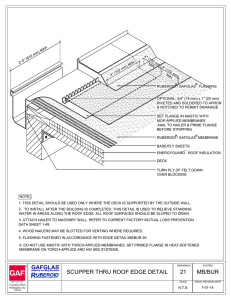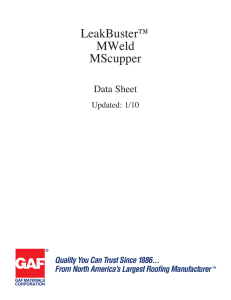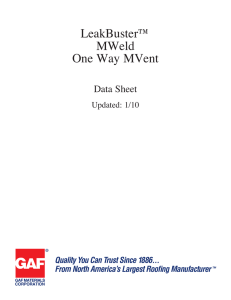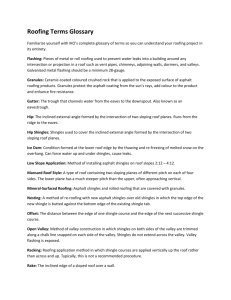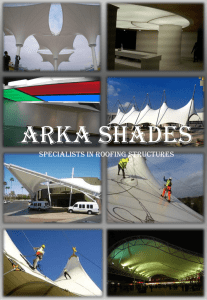Roof Problems - Liquid Rubber Europe
advertisement
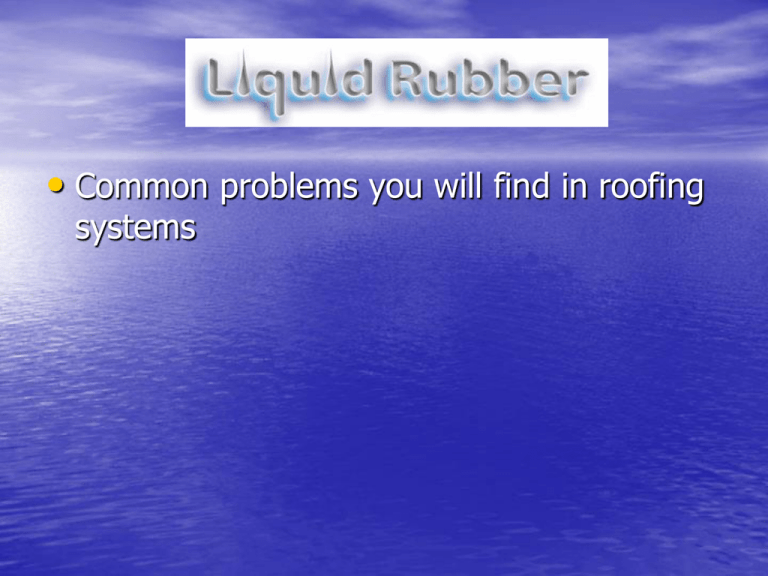
• Common problems you will find in roofing systems Fracture of a PVC flashing detail at a parapet wall caused by tenting and careless window cleaning workers Spalling of concrete surface and purging on an apartment building balcony overhang. Blisters and ridges on conventional BUR Rusted and corroded metal flashing at a roof flashing detail Wind blow off modified BUR caused improper roofing applications and lack of asphalt between fireboard overlay and original roof. Wind blow off of modified BUR caused by improper roofing applications and lack of asphalt between fireboard overlay and original roof. Plant growth on roof and an unballasted PVC roof. View of a roof with excessive snow loading. Illustration of a poor wall flashing detail, note exposed cant. Buildings were built at separate times and were never properly tied together. Improperly flashed EPDM roof drain detail. Lack of horizontal support Opening in flashing detail at scupper. View of non-insulated pipe and condensation that has occurred. Roof of an unheated building in winter. Severe water ponding problem and blocked drain strainers. Deterioration and failure of coping stones. Damaged control joint. Wet area detected by infrared camera outlined in yellow paint. Improper flashing repair at mechanical unit. Hole caused by corrosion of steel deck. Failure of structural steel deck due to snow and ice impact. Corroded steel deck and its subsequent removal and replacement. Failure of structural steel deck, caused by ice impact. Flashing problem at detail of metal roof. Flashing problem at detail of metal roof. Illustration of severe water ponding due to poor drainage. Oversized entry point for gas pipe. Excess build up of debris on a roof. Illustration of a hydraulic cement patch. View of a roof with debris. Improperly applied modified repair patch. Split in PVC curb flashing detail at non chamfered edge detail. Tenting of PVC membrane at parapet wall detail. Condensation and fungus growth found on the underside of a residential roof application caused by inadequate ventilation. Typical blister, note width of blister. Blister is usually a sign of moisture entrapment in the interply felt later. Typical longitudinal ridge. This type is caused by movement of the insulation substrate. This could be caused by delaminating of the insulation with the deck or vapour retarded or shrinkage of the insulation. Asphalt bleed out from a BUR roof. This is a sign of ageing. Bare and exposed felts caused by wind scouring at corner of roof. Substrate not properly prepared
